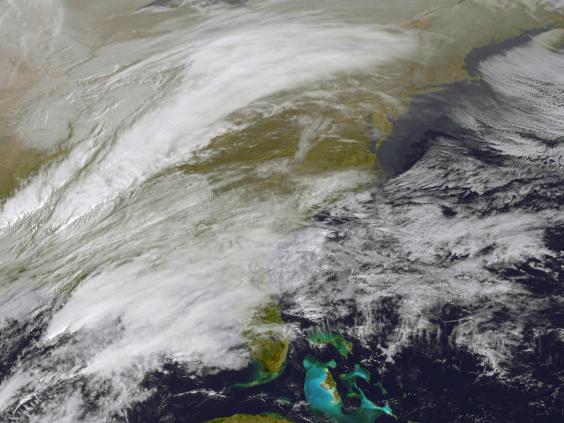 Last week, between March 13 and 15, Winter Storm Stella dumped as much as 58 inches of snow on the Northeast and the Mid-Atlantic United States. The storm knocked out power for more than 400,000 people as far south as Virginia and as far north as Nova Scotia. More than 60,000 people lost power in Massachusetts alone.
Last week, between March 13 and 15, Winter Storm Stella dumped as much as 58 inches of snow on the Northeast and the Mid-Atlantic United States. The storm knocked out power for more than 400,000 people as far south as Virginia and as far north as Nova Scotia. More than 60,000 people lost power in Massachusetts alone.
The increasing frequency of severe weather events like Winter Storm Stella exposes the vulnerability of outdated, overloaded centralized grids. In the past 15 years, the five-year annual average of grid power outages has doubled every five years, meaning the current five-year annual average is four times higher than it was 15 years ago. These statistics, and last week’s blizzard, point to the important role microgrids can play in preventing electrical power disasters.
Major population centers in New York and Washington DC were spared last week, but memories of Superstorm Sandy are never far from the minds of New Yorkers. Lessons learned when the NYU microgrid kept the lights on while the rest of the city was dark moved the state to take radical but timely action. Multi-billion-dollar state projects under REV (Reforming the Energy Vision) are working to overhaul the state’s power infrastructure. The NY Prize competition helps New York communities create microgrids that can operate independently in the event of a power outage and add renewable energy to the state’s power mix. The lessons learned by New York are ones the rest of the country can’t afford to miss.

Green indicates less than 5% of customers without power, yellow 10-25% of customers without power, and red 50-75% of customers without power. Photo via MEMA/National GridKristin LaFratta |
Winter Storm Stella outages in Massachusetts could be catalyst for renewable energy, microgrid initiatives
After being hit hard by Stella, Massachusetts can potentially look forward to a more resilient future. The state’s been in the news in recent weeks with groundbreaking legislation pending that would set a 100% renewable energy goal: for electricity by 2035 and for all energy sectors by 2050. Also on the legislative agenda: bills for carbon pricing, conservation, and encouraging solar and wind power. Already, solar use is exploding in Massachusetts, with current numbers at 200 times those of 2007.
The state is benefitting economically as well, boasting more than 100,000 new clean-energy jobs. Otis AFB on Cape Cod is creating a microgrid project to serve as a blueprint for military microgrid use. Only three days before the storm, Massachusetts issued a solicitation for energy storage demonstration projects. The state expects to issue between 10 and 15 awards for up to 50% of total project costs up to a maximum award of $1.25 million. If the current 100% renewables bill passes, Massachusetts could surpass California in leading the country’s renewable energy future.
Sen. James B. Eldridge, one of the bill’s sponsors, wants Massachusetts to provide an example for energy reform throughout the country.
“Massachusetts has been a leader on alternative energy policy for over a decade,” he explains. “Moving to 100 percent renewable energy by 2050 will allow the Commonwealth to remain a beacon of hope in moving away from fossil fuels.”
The country will be closely watching Massachusetts’ progress with these initiatives. With any luck, it won’t take more deadly natural disasters to move more states forward on renewable energy and resilient microgrids. In the current political climate, tackling grid fragility and fossil fuel impact is going to be left to individual states. Hopefully, they will rise to the challenge.
